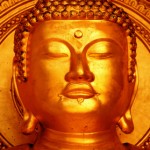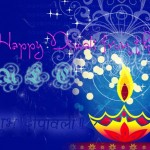 Raksha Bandan, meaning “Knot (or Bond) of Protection,” is one of Hinduism’s most important festivals. It honors the special bond between brothers and sisters. It is celebrated on Shravana Poornima, the day of the full moon, during the Hindu month of Shravana, occurring usually during early August.
Raksha Bandan, meaning “Knot (or Bond) of Protection,” is one of Hinduism’s most important festivals. It honors the special bond between brothers and sisters. It is celebrated on Shravana Poornima, the day of the full moon, during the Hindu month of Shravana, occurring usually during early August.
On this day, Hindu sisters tie a rakhi around their brothers’ wrists. The rakhi is a bracelet of colorful woven threads. The tradition started when sisters wished to protect their brothers who were going off to war. It is said that the longer the knot holds and the “thread of protection” stays with the wearer, the longer he will be protected.
Many legends are told concerning the origins of Raksha Bandan, but the most loved story tells of Rani Karnawati, widowed queen of Chittorgarh. Concerned that she could not defend her empire from invasion by the Sultan of Gujarat, a medieval kingdom in the western part of India, she sent a messenger with a rakhi to Emperor Humayun, ruler of Mughal, which at the time consisted of what is now Afghanistan, Pakistan and parts of Northern India, requesting his help. He immediately sent troops, but they arrived too late; the sultan had already captured the queen’s fortress. The queen and all the women in the fortress had taken their own lives through immolation, and the men were sent to fight to their death. Emperor Humayun’s army was ultimately successful in fighting back the sultan’s invaders and returned the kingdom back to the late queen’s son, Vikramjeet Singh
This annual celebration of the Sacred Thread has evolved beyond the tradition of sisters tying a rakhi to their brothers’ wrists. And the rakhi, many times, is no longer a simple band of threads. It can be woven into many designs with beads, sequins, pictures of deities, or other decorations added. For this festival, sisters (indeed, the whole family) dress up to celebrate the occasion. The sister will tie the rakhi around her brother’s wrist and pray for his well-being. In modern times, Raksha Bandan has become an annual observance for the whole family with rakhis given to fathers or any men involved in platonic friendships. And the passing of gifts between all participants has become increasingly popular.
Although a Hindu ceremony, this is an occasion that can be celebrated by anyone. Ministers of non-denominational and interfaith churches, such as our own Universal Life Church, are uniquely qualified to assist in developing similar celebrations of our oneness. It’s an opportunity for people of all faiths, and families with many beliefs, to set aside their differences and rejoice in their similarities. Bracelets can be used to represent rakhis if wristbands are chosen as part of the celebration. It is important to emphasize the family, together with any friends or extended family we may have. Gifts or cards can be exchanged. And, yes, do it right and get dressed up for the occasion. If you are not yet a minister of ULC, contact us and get ordained. We celebrate the diversity of religious beliefs among our human race and welcome your participation as a member of our clergy—of our family!




